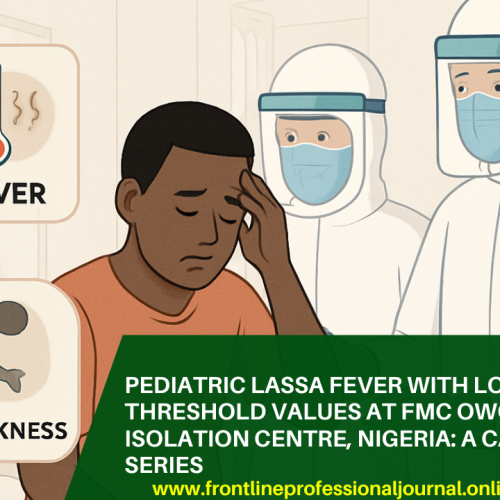Authors: Stephen Henry Afakorzi, Onyinye Ginika Mba and Stephen Manortey
Citation: Stephen Henry Afakorzi, Onyinye Ginika Mba and Stephen Manortey (2025) Prevalence and determinants of caesarean delivery in Ghana: A systematic review. Frontline Professionals Journal 2(3), 50-67
ABSTRACT
Background: Caesarean section (CS) rates in Ghana have risen significantly, exceeding the World Health Organization’s (WHO) recommended threshold of 10–15% in certain regions. This increasing trend is a public health concern due to potential maternal and neonatal complications when performed without medical indication. Socioeconomic, demographic, and clinical factors, such as maternal age, education, wealth, and previous CS history, drive these rates, with urban areas experiencing higher prevalence compared to rural settings. The study seeks to explore the prevalence and determinants of caesarean deliveries in Ghana, highlighting regional disparities, as well as socio-economic, demographic, and clinical factors influencing its rising trend.
Methods: A critical review of peer-reviewed literature was conducted on PubMed, Scopus, and Web of Science databases. Studies focusing on the prevalence and determinants of CS in Ghana published within the last decade were included. Data were synthesized thematically, emphasizing socio-demographic and clinical factors influencing caesarean delivery rates.
Results: Fifteen studies (15) including case-control, cross-sectional, and retrospective cohort studies were reviewed. The review identified significant regional, socioeconomic, and clinical disparities in CD prevalence, ranging from 6.59% in rural areas to 40.6% in urban health facilities. Key determinants included advanced maternal age, urban residence, higher education levels, and previous CD history. Facility type (private vs. public) also influenced CD rates, with private facilities reporting higher rates. Factors such as parity, breech presentation, and NICU referrals were strong predictors of CD.
Conclusions: The study highlights the need for policy reforms to regulate CD use, improve resource allocation, and address socioeconomic inequalities. Further research is needed to explore effective strategies for reducing unnecessary CS rates while ensuring safe obstetric care in Ghana.
Keywords: caesarean section, prevalence, determinants, Ghana, maternal health, socio-demographic factors, public health







